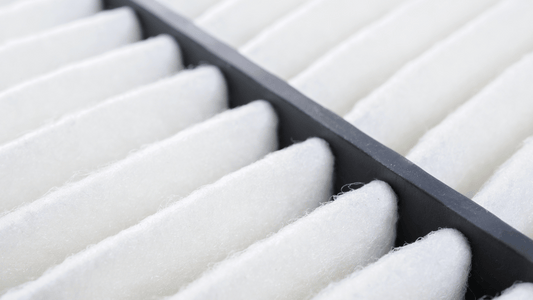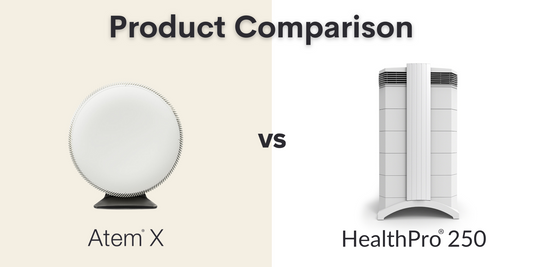Winter has well and truly set in and the chances are that indoor, rather than outdoor, air pollution is now the primary threat to our health, particularly if you suffer from allergies, asthma or other respiratory conditions. So, how do I clean the air in my home? A new paper from the Parliamentary Office of Science and Technology (POST) reviews the state of indoor air pollution in the UK.
This study points out that while it's well known that outdoor air pollution is harmful to health, most people are not aware of the severe impact that indoor air pollution can have on your health. Indoor air pollution in your home can come from:
- Building materials, furniture, and furnishings as well as cooking, heating, smoking and the use of products like paints, varnishes, ordinary cleaning products
- Outdoor pollution entering through windows, as well as cracks and leaks in a building
- Natural radon gas entering from the basement of a building - may be less of a concern for those with allergies, but a proven cause of lung cancer
- Pet dander and dust mites allergens in your home, as well as mould
Some of the indoor pollutants from these sources that can accumulate in your home include nitrogen oxides, carbon monoxide, particulate matter, radon, tobacco smoke, allergens like mould and house dust mite and volatile organic compounds. While there is plenty of scientific evidence for the health impacts of carbon monoxide and radon, lack of research and monitoring mean that less is known about the dangers of exposure to other indoor pollutants.
Does the POST paper highlight what we do know about some key indoor pollutants - a starting point for further research perhaps? Here's a summary.....
- Particulate matter (PM) can damage the heart and lungs, with smaller particles getting deep into the lungs and causing inflammation. The ultra-fine particles can reach the gas exchange regions, This, in turn, can increase the risk of blood clotting, setting the scene for a heart attack. Oh, and did you know that stir-frying can produce a lot of PM, including superheated oil particles.
- Higher levels of nitrogen oxides indoors have been linked to higher levels of respiratory symptoms in children, according to the Committee on the Medical Effects of Air Pollutants. Gas, coal and wood-based cooking and heating appliances may raise levels of nitrogen oxides indoors.
- Carbon monoxide causes nearly 50 accidental deaths a year in England and Wales and there's a possibility that chronic exposure may damage the nervous system. Faulty gas cookers and solid fuel boilers are responsible for carbon monoxide emissions in the home.
- Tobacco smoke reduces lung function, triggers asthma attacks and irritates eyes.
- Allergens trigger rhinitis and asthma. The main allergens in the home are house dust mite droppings, fungal particles, pet dander, and pollen.
Volatile organic compounds irritate the lungs, with children being especially vulnerable. They include both natural and synthetic chemicals like formaldehyde, coming from several sources including construction products, cleaning products, air fresheners, paints and electrical goods.
Clearly, exposure to indoor air pollution may pose a substantial health risk. So how can UK regulation and policy be improved to deal with the threat? The POST paper has some thought-provoking suggestions....(to be continued)
Source: Parliamentary Office of Science and Technology Note 366 UK Indoor Air Quality November 2010




